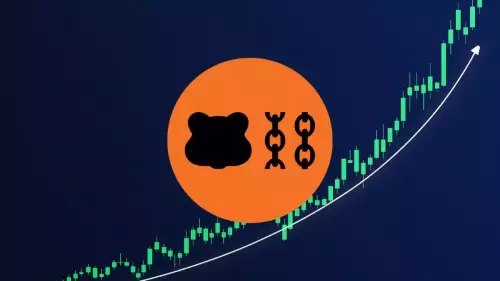 |
|
 |
|
 |
|
 |
|
 |
|
 |
|
 |
|
 |
|
 |
|
 |
|
 |
|
 |
|
 |
|
 |
|
 |
|
Nachrichtenartikel zu Kryptowährungen
Banking Fraud Detection Statistics 2025: Prevalence, Impact, and Prevention Strategies
Jan 09, 2025 at 11:00 pm

Banking fraud is a serious and growing problem. In 2025, it’s estimated that banks will lose over $40 billion to fraud. This is a significant increase from the $27 billion lost in 2024.
There are a number of factors contributing to the rise in banking fraud. One factor is the increasing popularity of online and mobile banking. Fraudsters are taking advantage of the convenience of these channels to target consumers. Another factor is the growing sophistication of fraud techniques. Fraudsters are using new and innovative methods to bypass fraud detection systems.
The most common types of banking fraud include:
* Identity theft
* Counterfeit checks
* Forged signatures
* Unauthorized withdrawals
* Wire transfer fraud
* Credit card fraud
* Debit card fraud
* ACH fraud
* Elder financial abuse
Banking fraud can have a devastating impact on both consumers and institutions. Consumers may lose their savings, have their credit ruined, and experience emotional distress. Institutions may incur losses, experience reputational damage, and face regulatory scrutiny.
To combat banking fraud, a number of technologies are being used, including artificial intelligence (AI), machine learning (ML), and data mining. These technologies can help banks to identify and prevent fraud.
In addition to technology, a number of regulatory measures are also being taken to address banking fraud. For example, the Dodd-Frank Wall Street Reform and Consumer Protection Act includes a number of provisions to strengthen fraud detection and prevention.
Recent developments in banking fraud detection include the use of AI-powered chatbots to assist consumers with fraud detection and prevention. These chatbots can provide consumers with tips on how to protect themselves from fraud and can help them to report fraud if it occurs.
As banking fraud continues to evolve in complexity, the collaboration between technology, regulation, and consumer awareness becomes increasingly crucial. The statistics underscore the need for proactive and innovative measures to stay ahead of fraudsters. From AI-driven detection tools to enhanced regulatory frameworks, the fight against fraud is advancing rapidly. However, financial institutions and consumers alike must remain vigilant, as the stakes are higher than ever. Together, these efforts promise a safer, more secure future for global financial systems.
Haftungsausschluss:info@kdj.com
Die bereitgestellten Informationen stellen keine Handelsberatung dar. kdj.com übernimmt keine Verantwortung für Investitionen, die auf der Grundlage der in diesem Artikel bereitgestellten Informationen getätigt werden. Kryptowährungen sind sehr volatil und es wird dringend empfohlen, nach gründlicher Recherche mit Vorsicht zu investieren!
Wenn Sie glauben, dass der auf dieser Website verwendete Inhalt Ihr Urheberrecht verletzt, kontaktieren Sie uns bitte umgehend (info@kdj.com) und wir werden ihn umgehend löschen.
-

- Ripple (XRP) im Jahr 2026: Halten oder aussteigen? Ein Blick auf die Zukunft von XRP und neue DeFi-Alternativen
- Nov 08, 2025 at 06:00 pm
- Analyse des Potenzials von Ripple (XRP) im Jahr 2026, Vergleich mit aufstrebenden DeFi-Tokens wie Mutuum Finance (MUTM) und Untersuchung von Faktoren, die den Preis und die Marktposition von XRP beeinflussen.
-

-

- Berachain-Preisvorhersage: Navigieren durch den Honeycomb-Hype in Krypto
- Nov 08, 2025 at 06:00 pm
- Tauchen Sie ein in die Begeisterung um Berachain (BERA) und seinen zukünftigen Preis. Wir erläutern die neuesten Prognosen, von bescheidenem Wachstum bis hin zu ehrgeizigen Höchstwerten, und was sie für Anleger bedeuten.
-

-

- Shiba Inus nächster Schritt: Navigieren in einem sich verändernden Markt
- Nov 08, 2025 at 05:51 pm
- Shiba Inu wartet inmitten der Marktveränderungen auf seinen nächsten Schritt. In diesem Artikel werden die Widerstandsfähigkeit von SHIB, potenzielle Erholungstrends und Erkenntnisse von Marktanalysten untersucht.
-

-

-

-




















![The Graph-Preisvorhersage [GRT Crypto Price News Today] The Graph-Preisvorhersage [GRT Crypto Price News Today]](/uploads/2025/11/07/cryptocurrencies-news/videos/690d4df44fe69_image_500_375.webp)










































